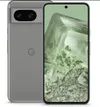Google Pixel 9 Pro XL display brightness tested — this blows away the iPhone 15 Pro Max

Companies love talking big numbers about their new phones, just to prove a point about them achieving a certain metric. In the world of phones, nothing pushes my buttons more than whenever I hear about an outrageous claim on how bright a phone’s display can get. Google’s no stranger to this, as evidenced by its most recent Made by Google event when it claimed that the Pixel 9 Pro XL reaches a peak brightness output of 3,000 nits.
I’ve heard other over-exaggerated claims before, like how the OnePlus 12 can reach 4,500 nits, but never gave much credence to them because in reality, our testing has never come close to reaching that level of brightness. That doesn't mean phone displays can't reach those highs, but they probably happen under specific conditions. Nevertheless, Tom’s Guide’s display benchmark testing still yields the objective results that can definitively say which screen is brighter.
In testing the new flagship for my Pixel 9 Pro XL review, I was surprised most by how the Google phone smashed the record for having the brightest phone display that Tom’s Guide has ever tested — reaching a blinding peak output of 2,469 nits. Knowing this, I think the Pixel 9 Pro XL puts the iPhone 16 Pro Max on notice because it’s raising the bar on what we expect from a phone display.
How we test displays

Now technically, this 2,469 nits reading was sustained only for a brief period of time in our controlled testing, which simulates a phone being used outside on a sunny day. We do this by using a light meter pointing at the Pixel 9 Pro XL’s display with adaptive brightness activated, while pointing a high-powered LED flashlight at the phone’s light sensor. After sustaining its peak brightness of 2,469 nits for a few seconds, the display eventually settled to around 1,922 nits on average.
Considering that the iPhone 15 Pro Max achieves a brightness of 1,550 nits in our testing, there’s more pressure for the iPhone 16 Pro Max to beat its predecessor and Google’s latest flagship. So far, rumors hint that Samsung is supplying advanced OLED panels to Apple's upcoming Pro phones that could boost brightness by 20%. If this turns out to be true, that would result in 1,860 nits for the iPhone 16 Pro Max display based on the testing data we gathered with the 15 Pro Max.
| Row 0 - Cell 0 | Max Brightness |
| Pixel 9 Pro XL | 2,469 nits |
| Pixel 8 Pro | 1,526 nits |
| iPhone 15 Pro Max | 1,550 nits |
| Galaxy S24 Ultra | 1,363 nits |
| OnePlus 12 | 865 nits |
| Razr Plus 2024 | 2,158 nits |
That still wouldn’t be enough to beat the Pixel 9 Pro XL’s record, so it’s going to take a lot more to get there. The reason why this is important is because a brighter screen simply makes it easier to see under sunny conditions, rather than trying to shield the screen from the sun with your hand. Additionally, a brighter screen gives off a better glow while watching movies and video — just like the best TVs.
Why the Pixel 9 Pro XL excels
Interestingly enough, I think the Pixel 9 Pro XL makes a bolder statement by proving how it’s much more efficient. I’m referring to the power efficiency of its Super Actua display and Tensor G4 chip, which results in substantial improvement for its battery life.
Get instant access to breaking news, the hottest reviews, great deals and helpful tips.
In our battery testing, the Pixel 9 Pro XL lasted 14 hours and 37 minutes. That’s an obscene improvement given how the Pixel 8 Pro tapped out at 10 hours and 3 minutes. All of this is important to remember because despite the Pixel 9 Pro XL having the brightest we’ve ever tested, that screen isn't turning out to be a huge strain on the battery.
Compared to its peers, like the Samsung Galaxy S24 Ultra and OnePlus 12, the Pixel 9 Pro XL is still in a league of its own with no other equal coming close. Actually, the only other recent phone to exceed 2,000 nits is the Motorola Razr Plus 2024 at 2,158 nits. All of this means that the iPhone 16 Pro Max can’t afford to come up short.
More from Tom's Guide
- Samsung Galaxy S25 should steal this feature from iPhone 15
- Galaxy S24 Ultra vs. Galaxy S23 Ultra — worth the upgrade?
- Galaxy AI summaries — we tested the accuracy of this Galaxy S24 feature

John’s a senior editor covering phones for Tom’s Guide. He’s no stranger in this area having covered mobile phones and gadgets since 2008 when he started his career. On top of his editor duties, he’s a seasoned videographer being in front and behind the camera producing YouTube videos. Previously, he held editor roles with PhoneArena, Android Authority, Digital Trends, and SPY. Outside of tech, he enjoys producing mini documentaries and fun social clips for small businesses, enjoying the beach life at the Jersey Shore, and recently becoming a first time homeowner.










